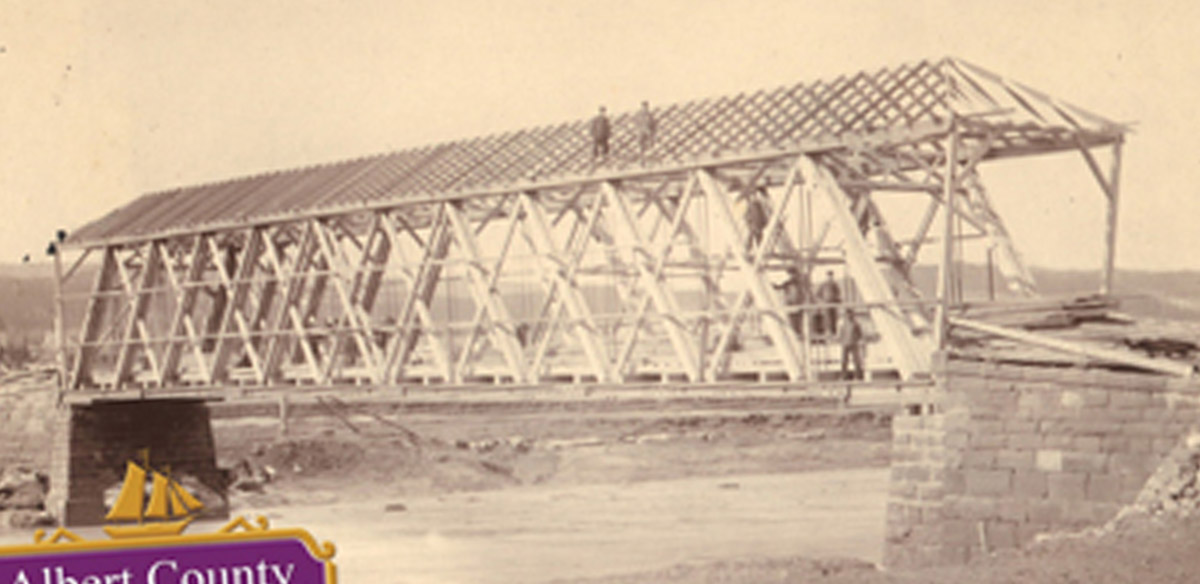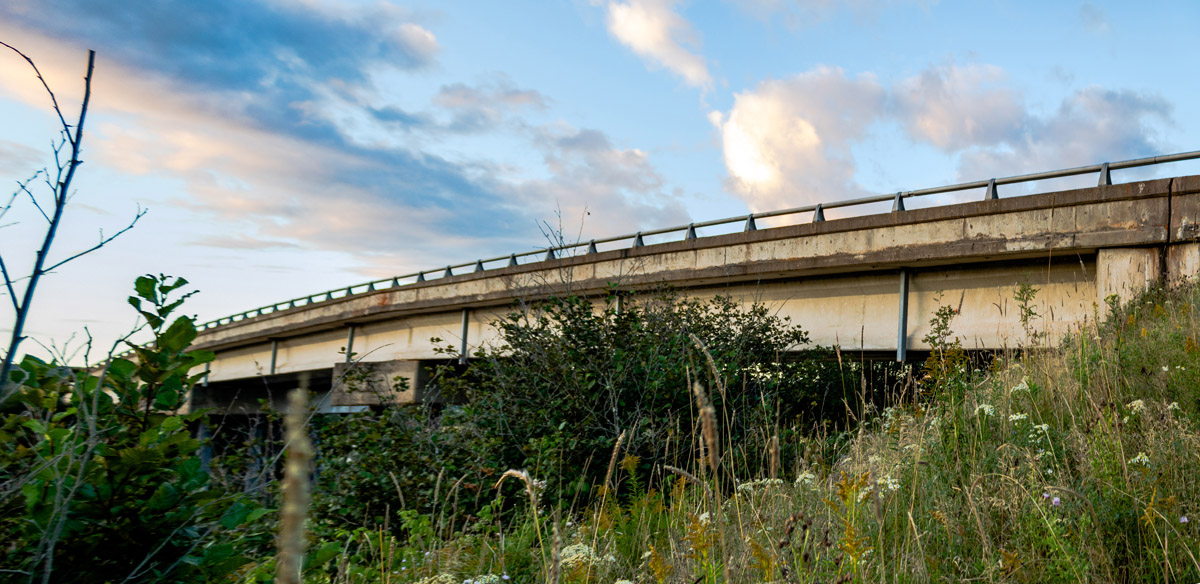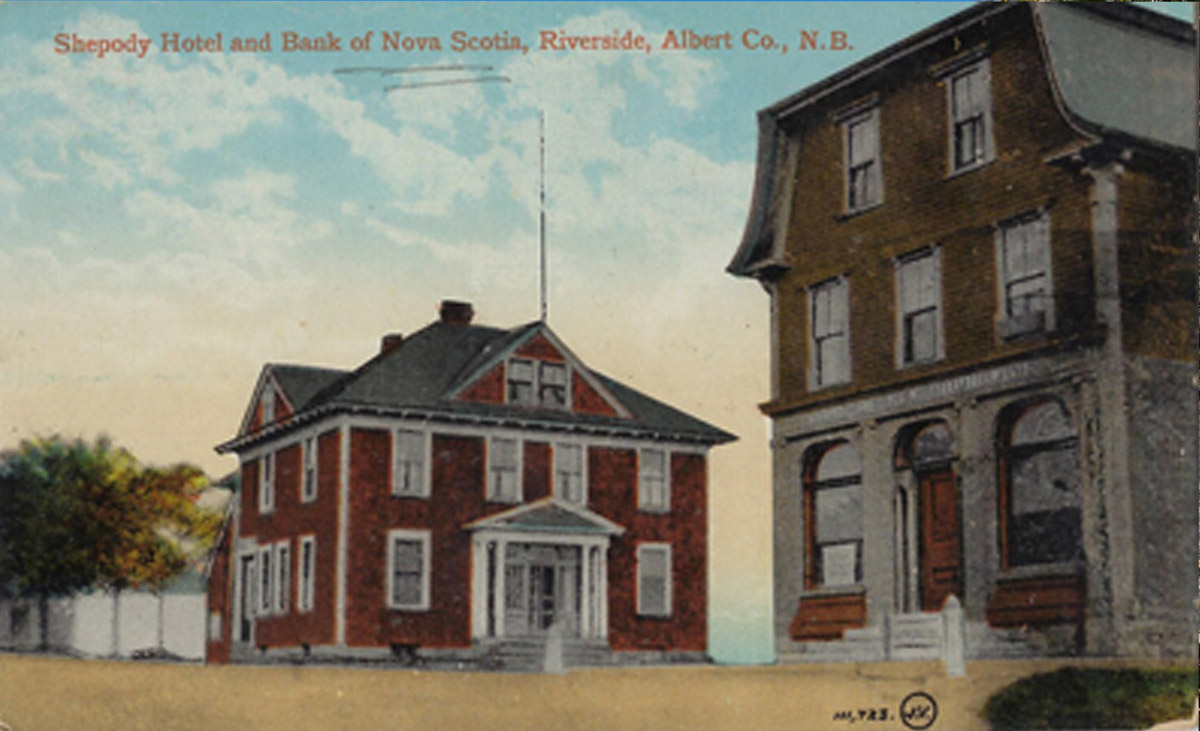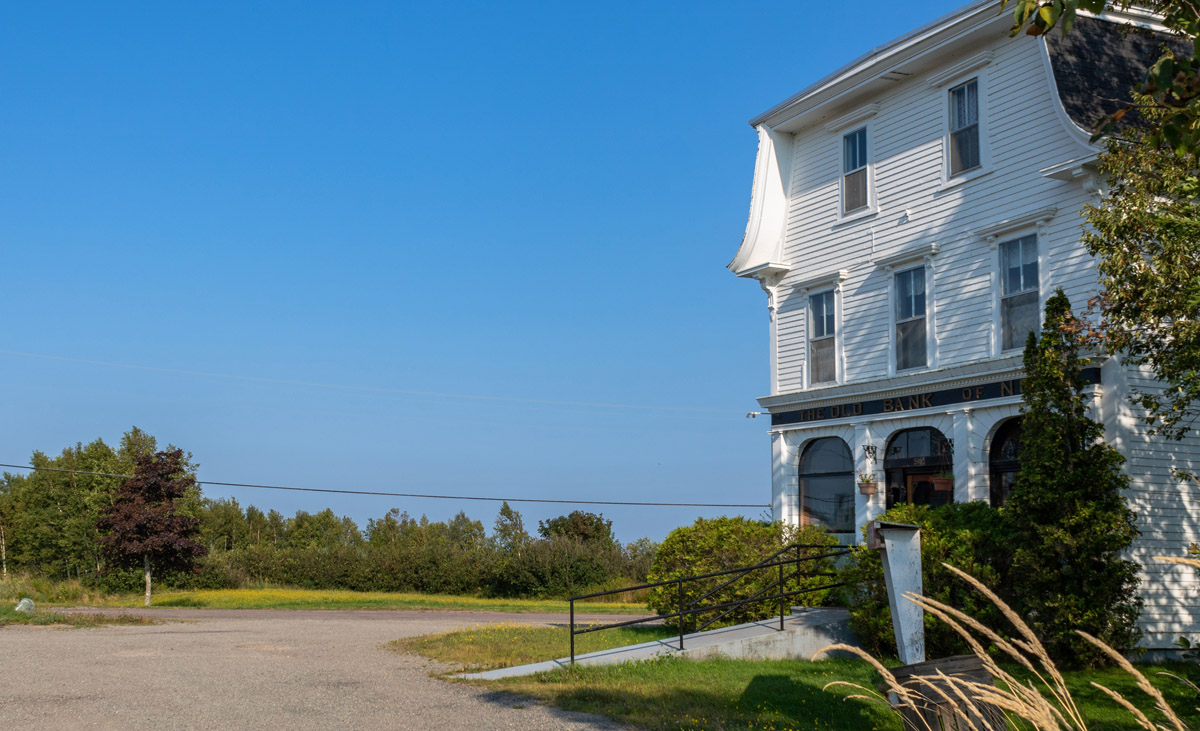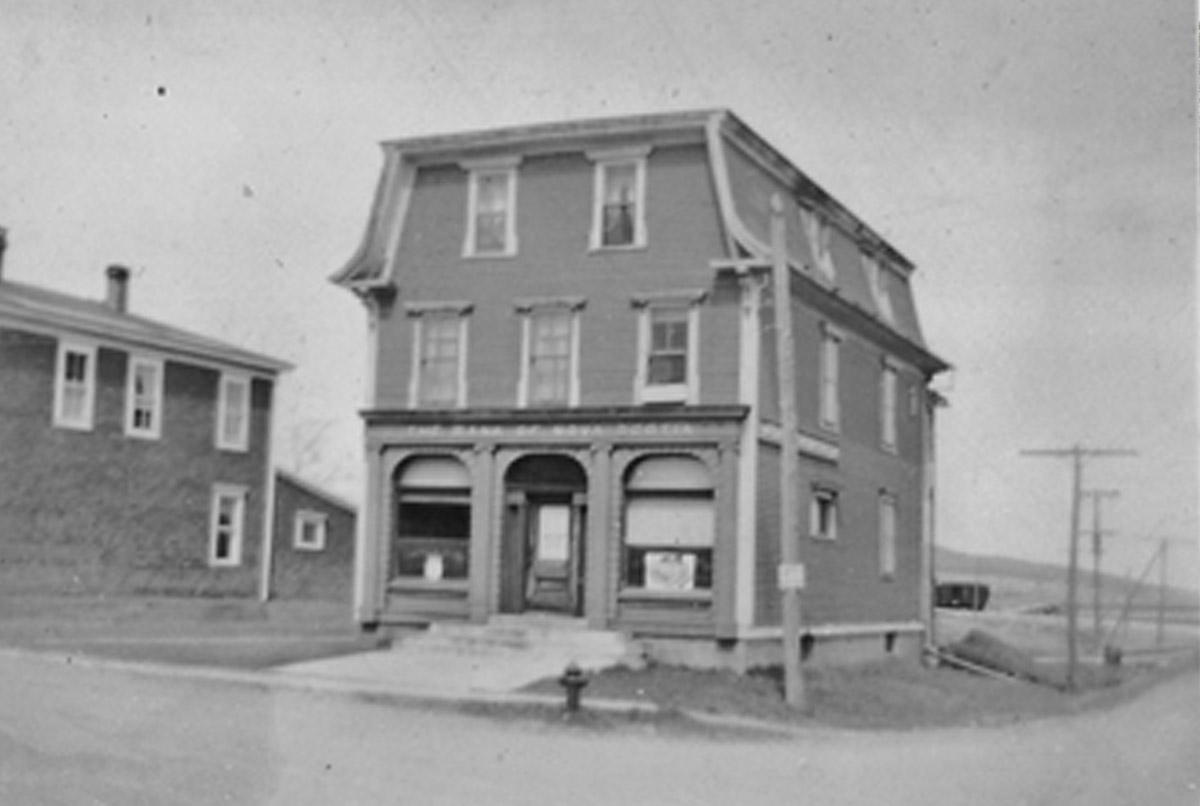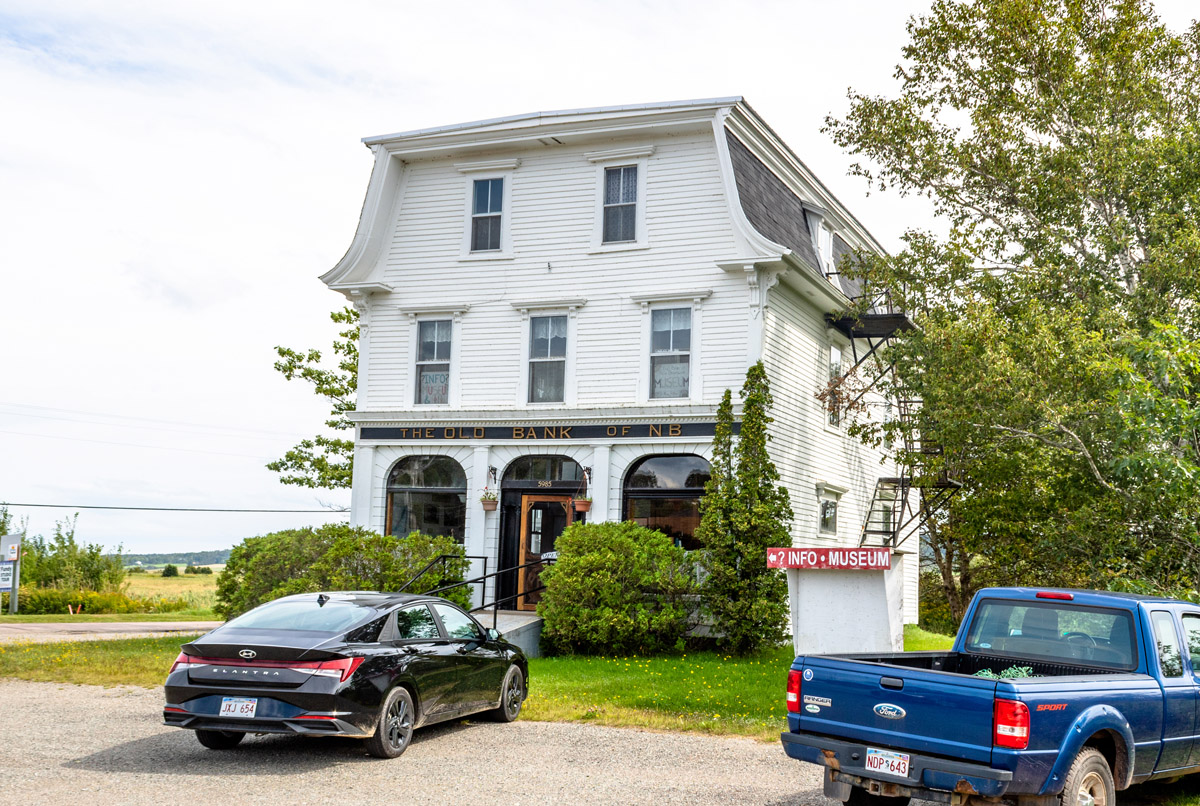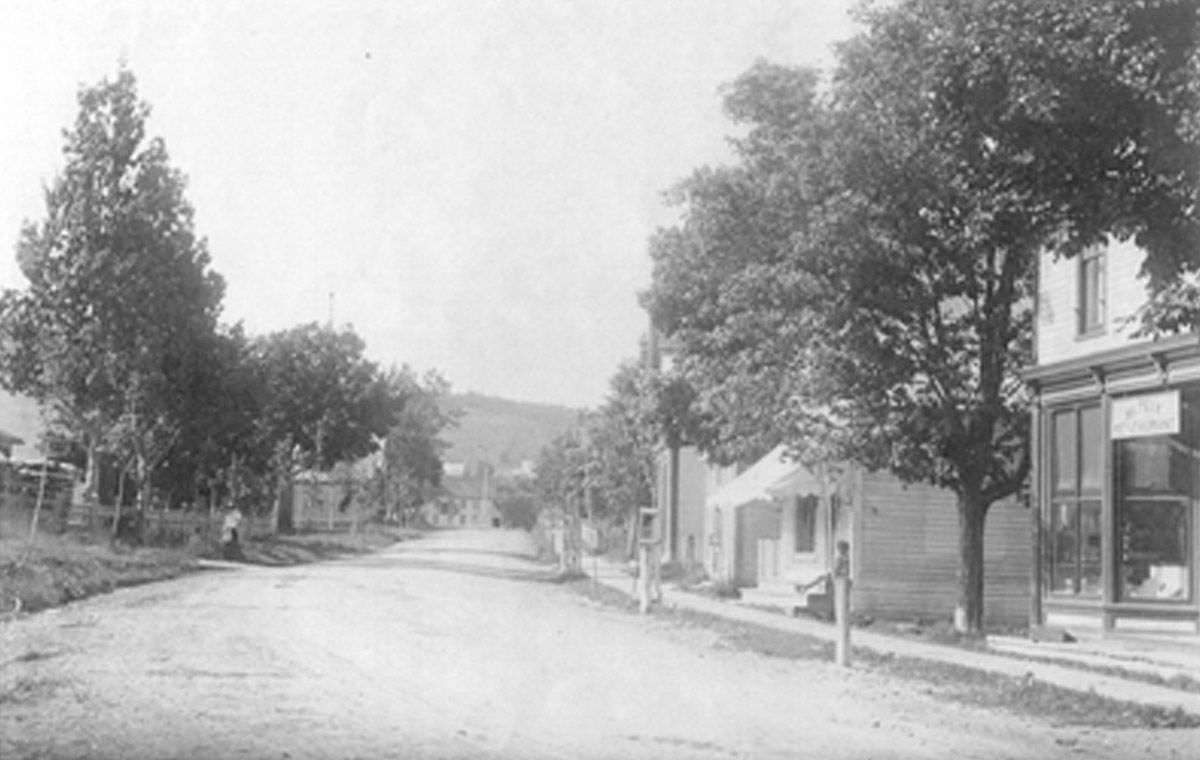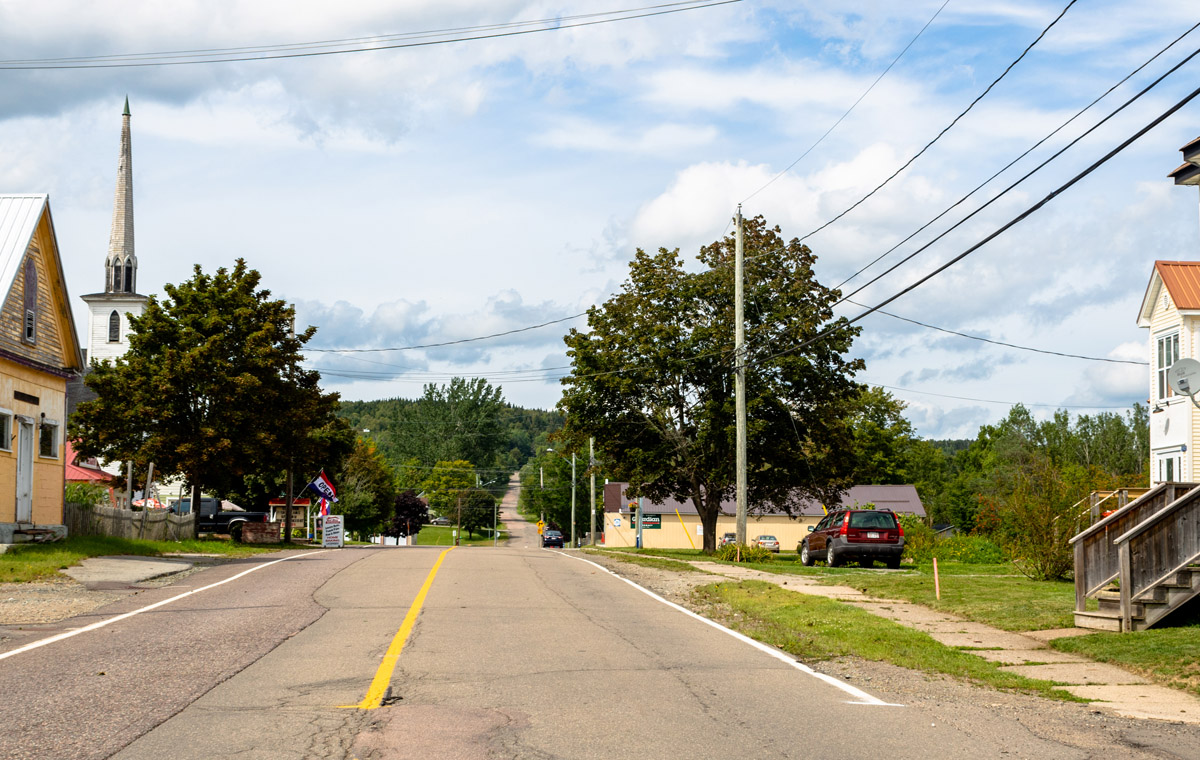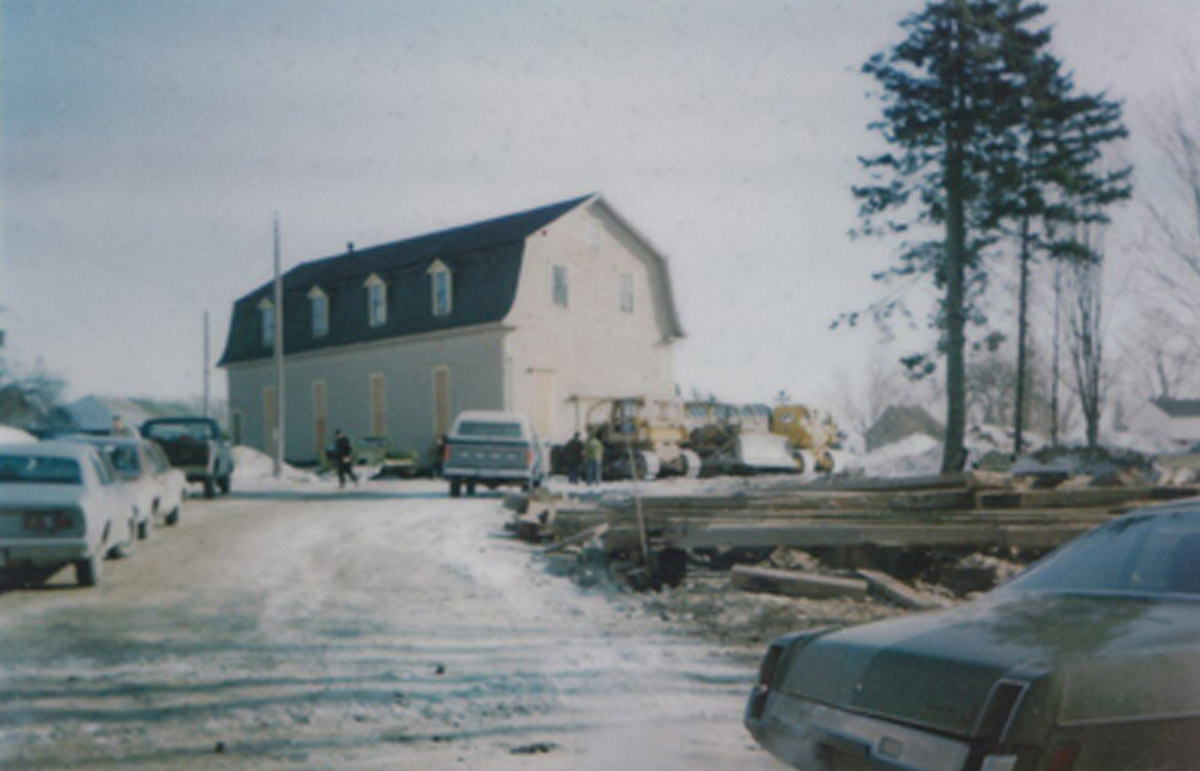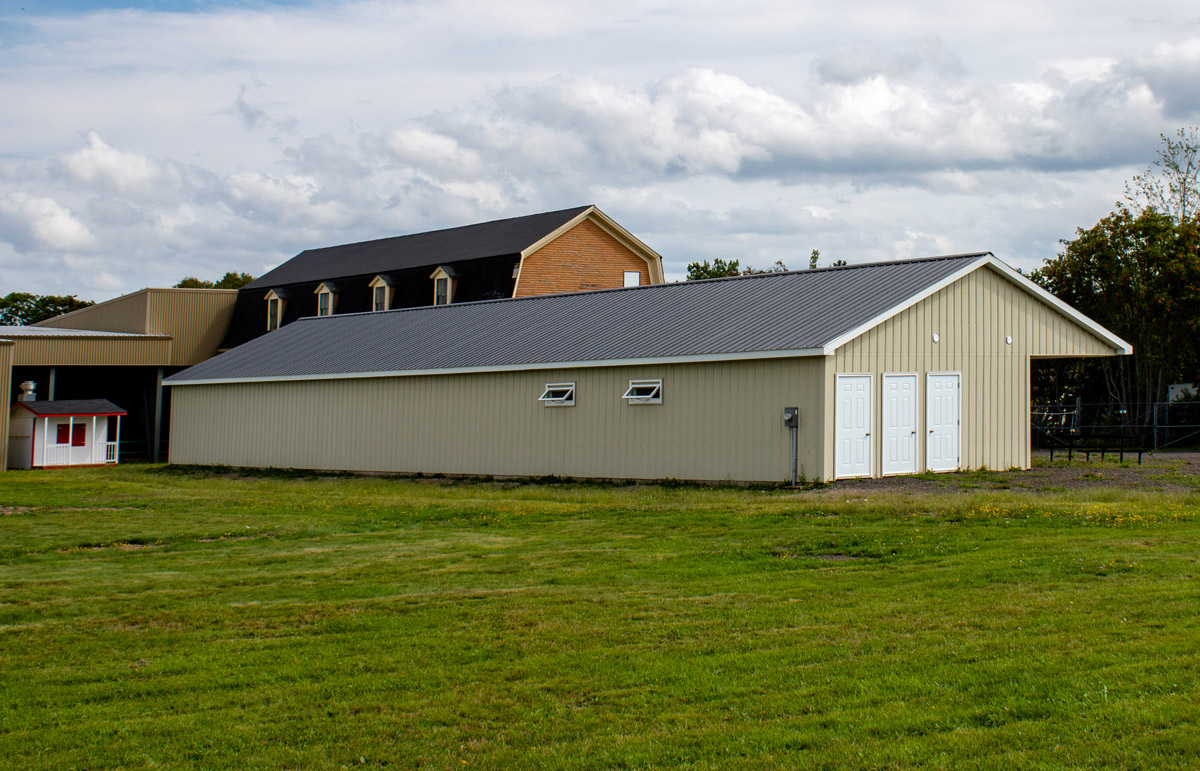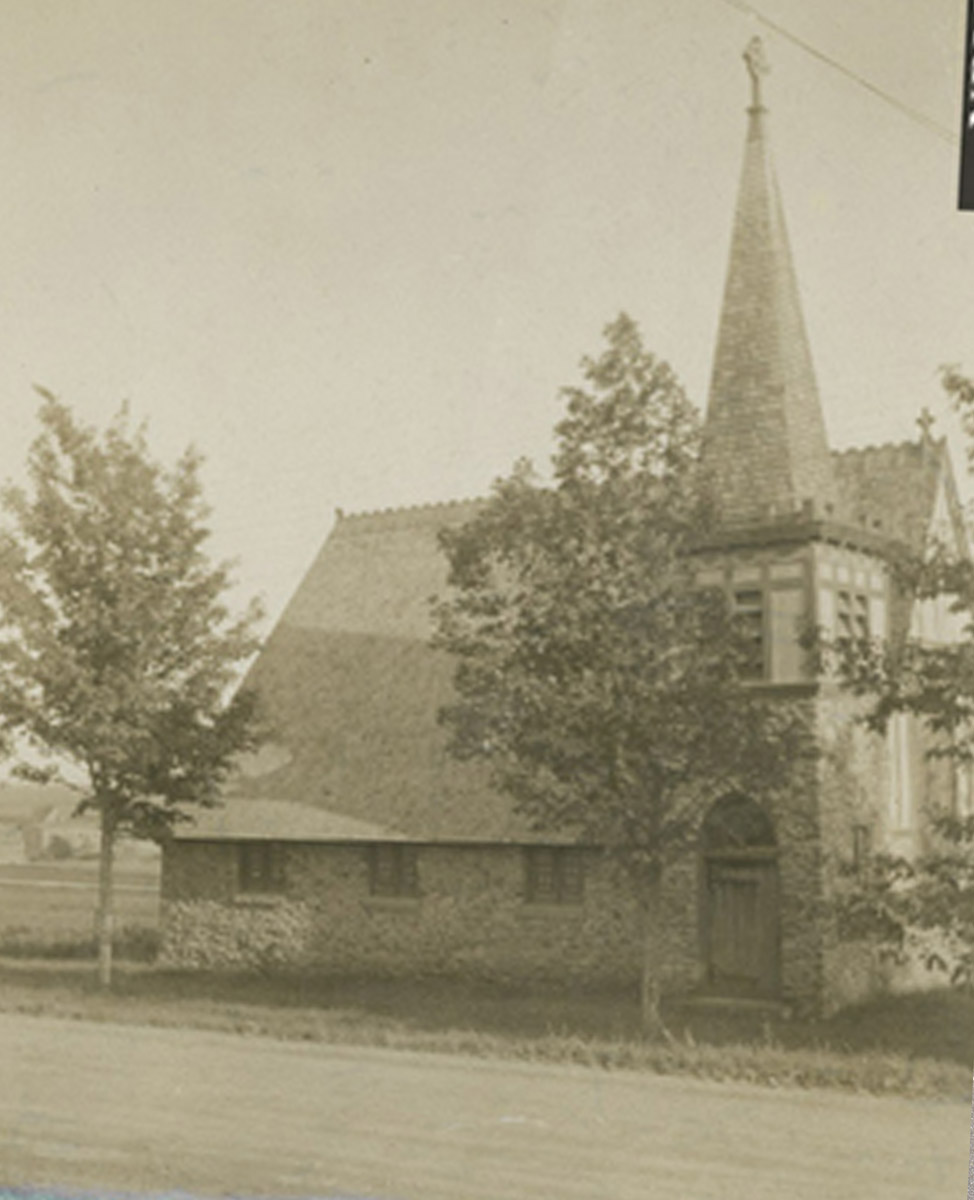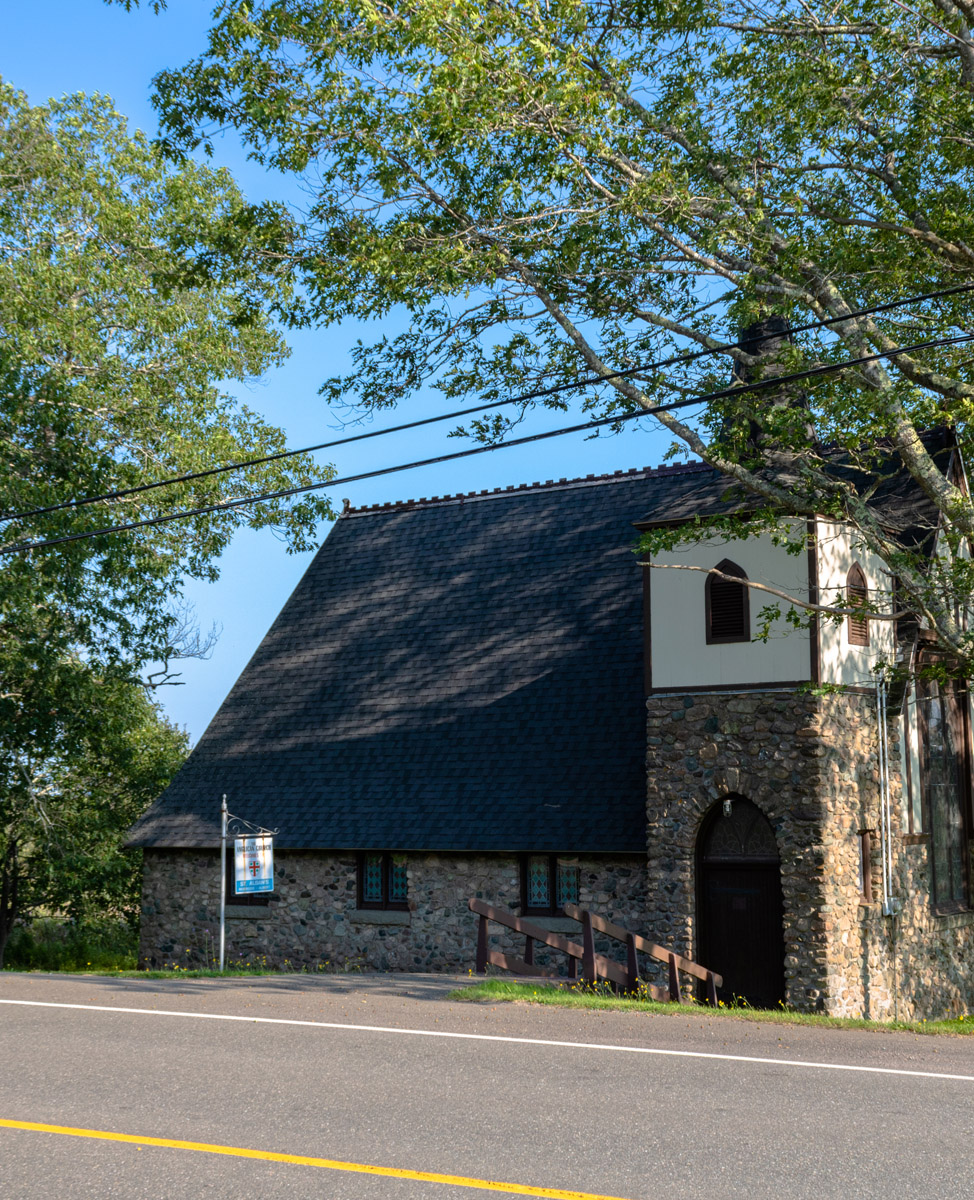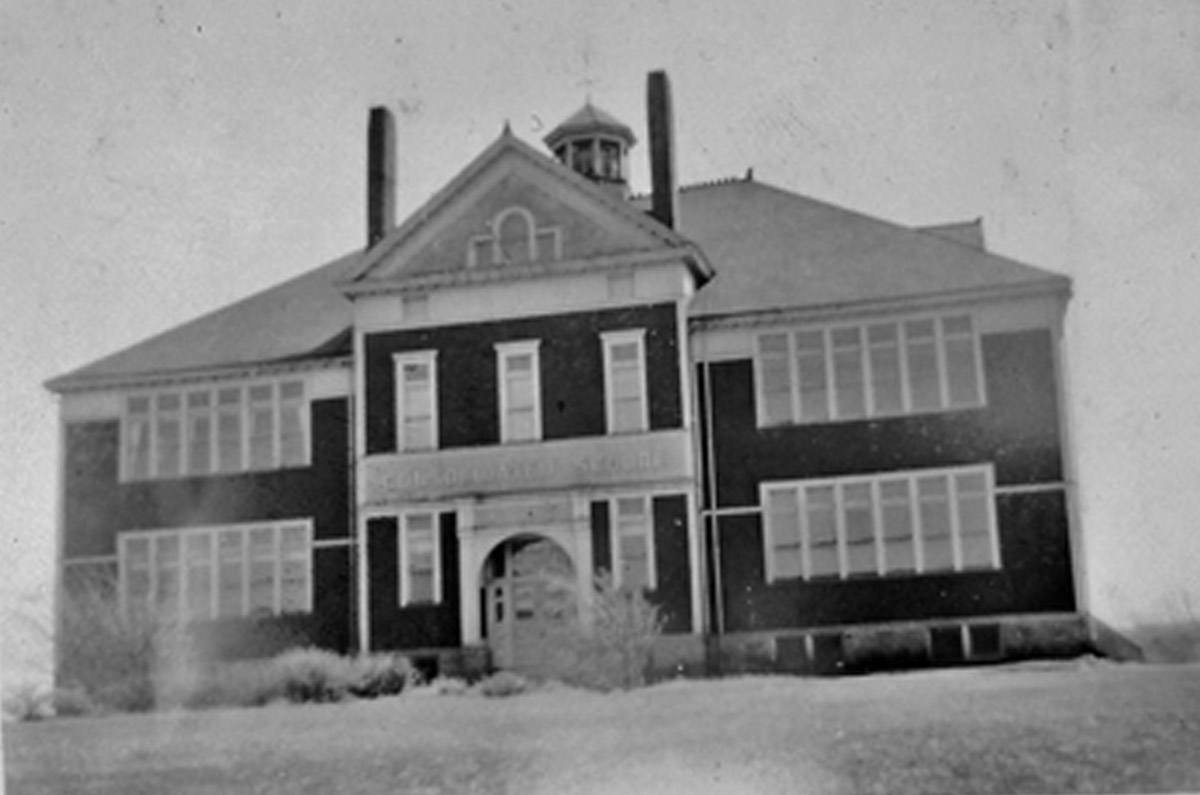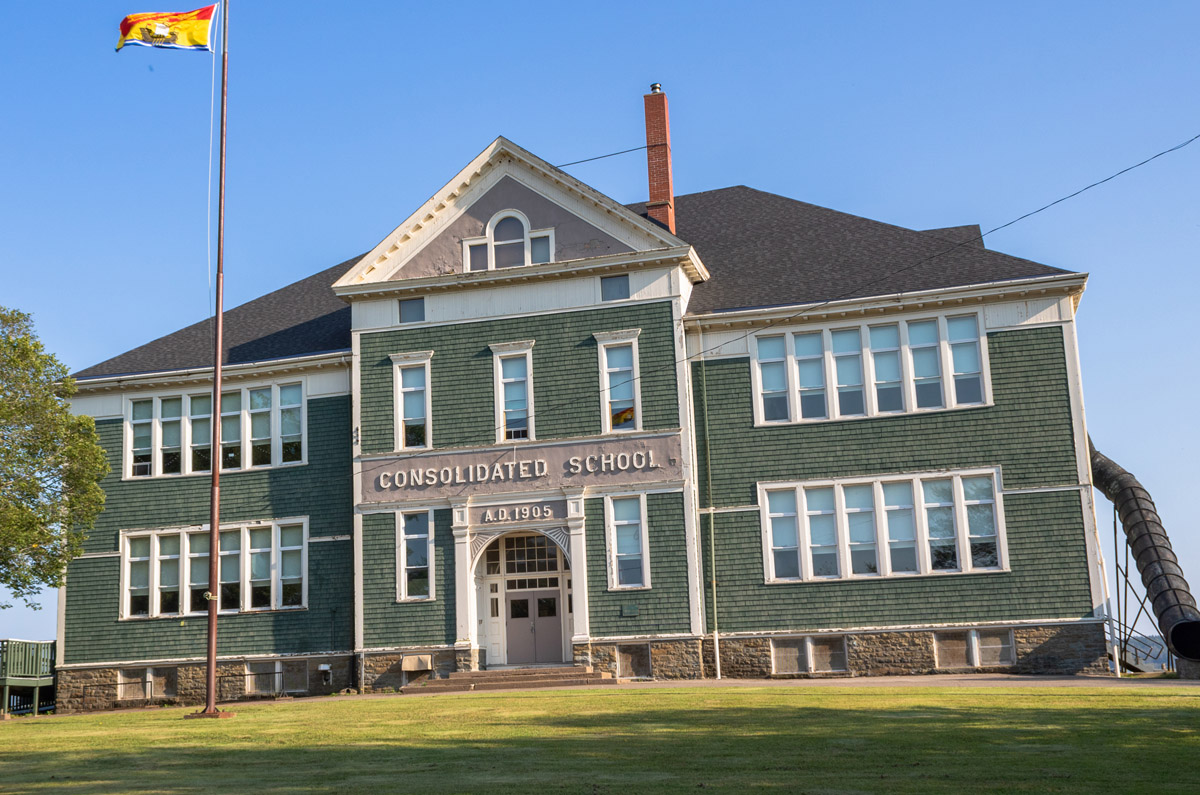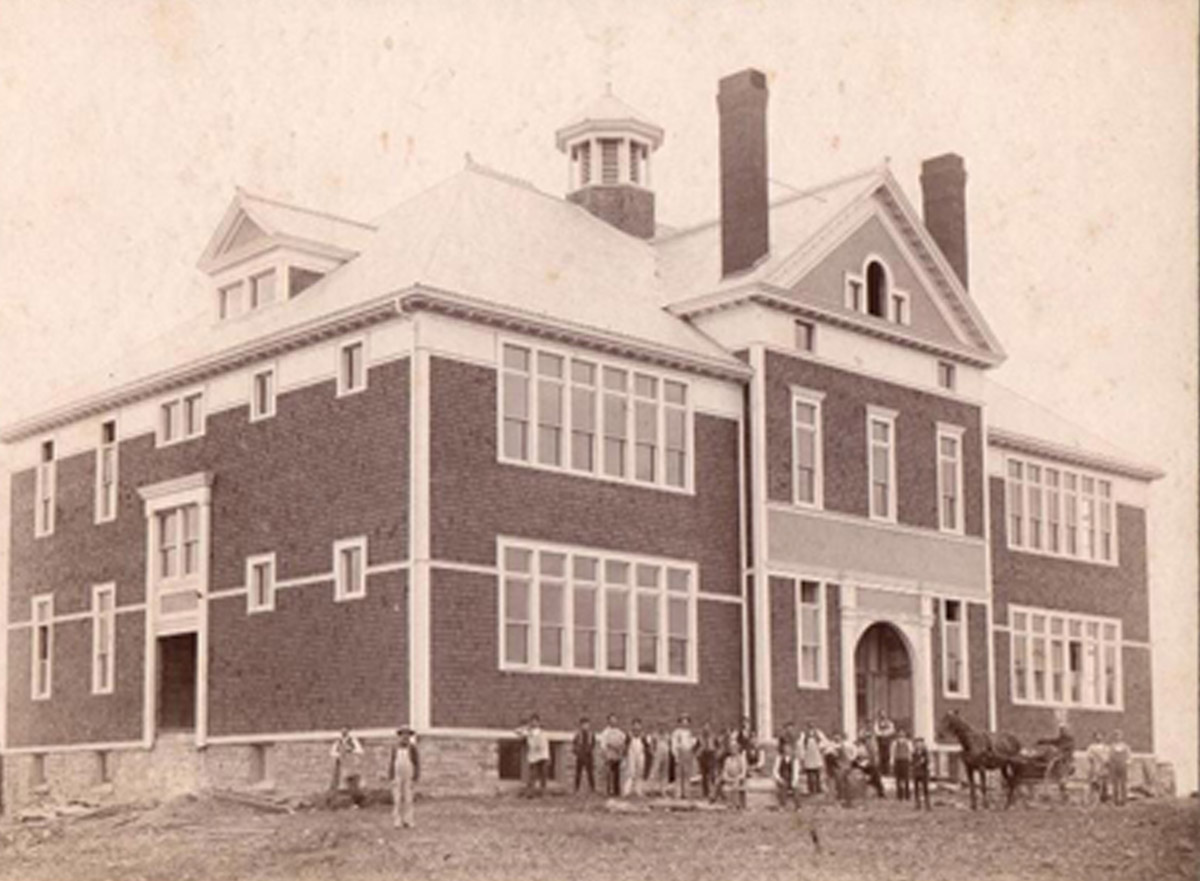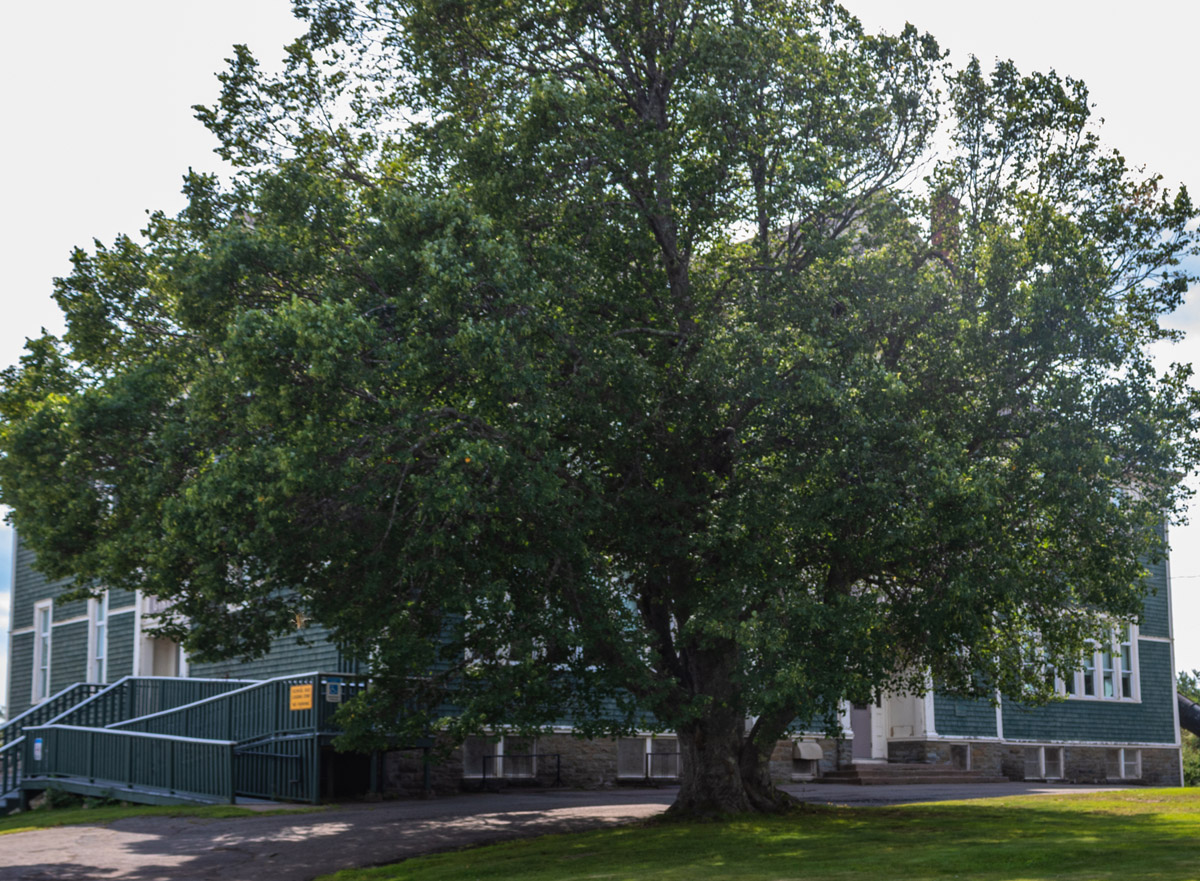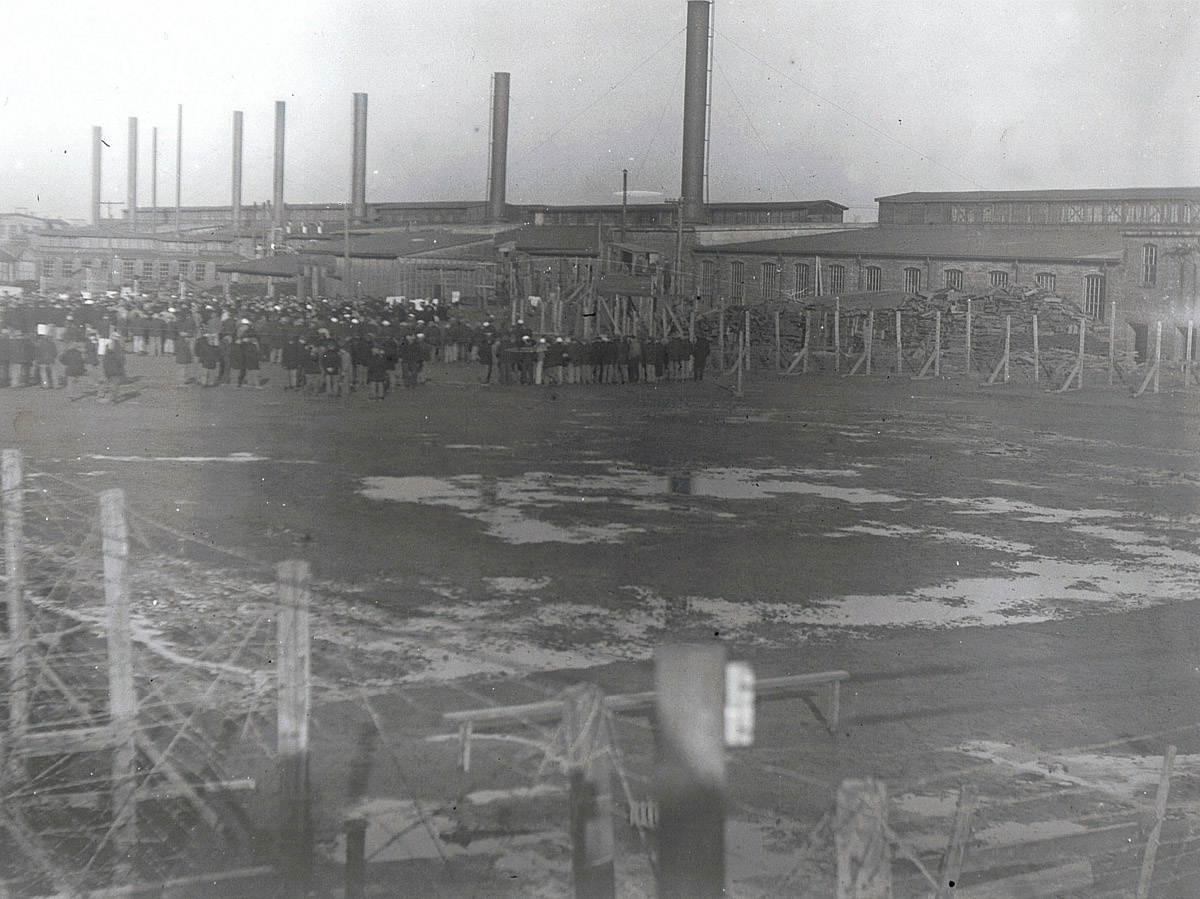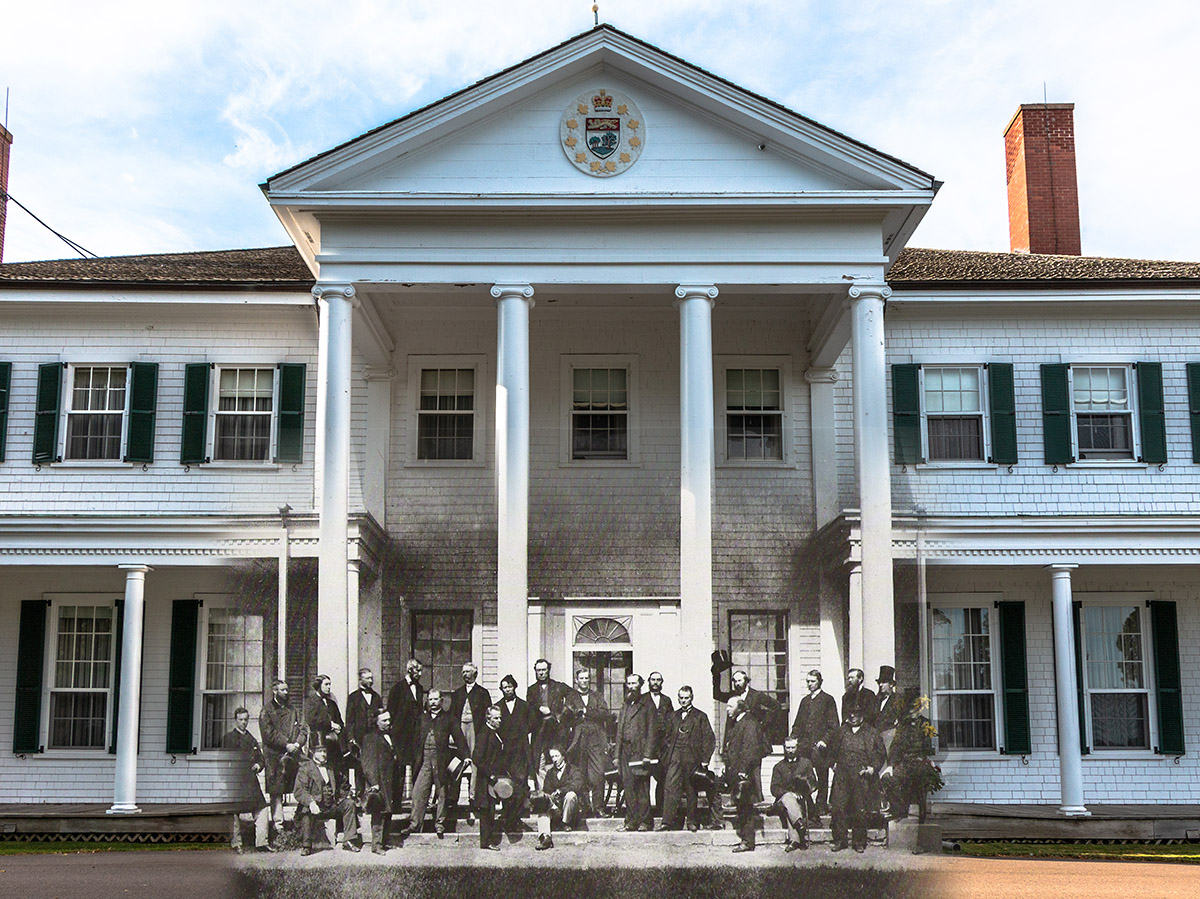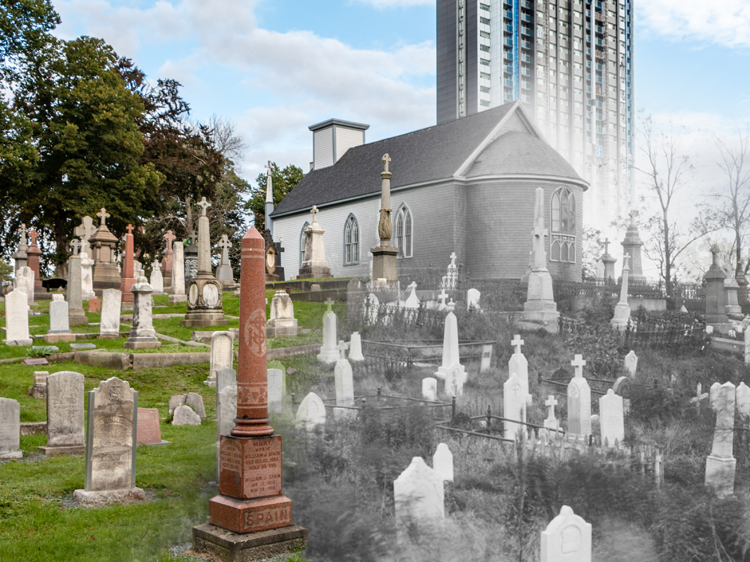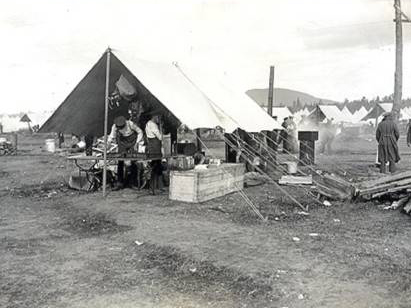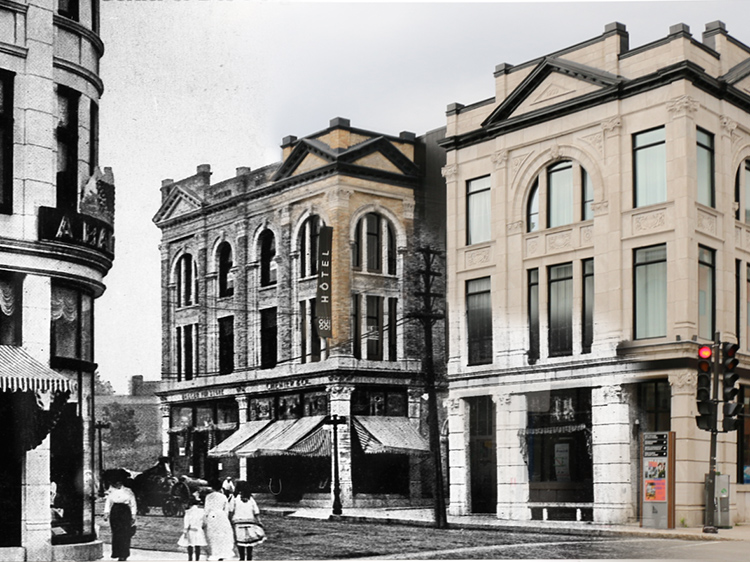Walking Tour
The Village of Riverside-Albert
Communities Coming Together
By Natalie Dunsmuir
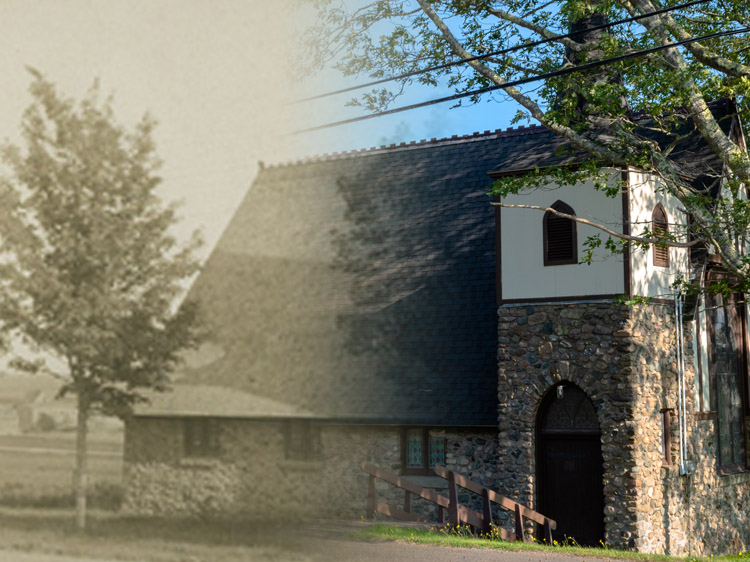
New Brunswick Museum Collection 1987-17-519
Originally, the small village of Riverside-Albert was actually two separate communities: the town of Albert to the west and the town of Riverside on the banks of the Shepody River. These two small communities grew up side by side throughout the early years of British and Canadian settlement in Albert County, each founded in the latter half of the nineteenth century. In 1966, the village of Riverside-Albert incorporated and the two communities became one.
This walking tour will take you throughout the small town, winding along most of the main roads as we learn about the history of this community. The first stop, located at the bridge over the Shepody River, on the road towards Harvey, dives into the history of the railroad in Riverside-Albert and the bridge collapse that was almost deadly. Then, travel along King Street north to the Old Bank building, where Stops Two and Three are located. Here, learn the history of the bank. Head up Main Street for Stop Four and learn about the fires that plagued this community in its early years. Stop Five takes you farther up Main Street to the agricultural fairgrounds and the Oulton Hall, where you will dive into the history of the Albert County Exhibition.
Stop Six is located around the bend to the east and farther down King Street, at St Alban's Church. Here, learn about the religious history of Riverside-Albert and the churches that call this town home. The final two stops of the tour are both located at the Riverside Consolidated School on Water Street. To get there, head south down Porter Street from the St Alban's Church and make a right on Water Street. Once you reach the school, explore the history of education in Albert County.
This project is a partnership with Fundy Tourism.
1. The Railway and Riverside-Albert
1880
There was originally a railroad bridge across the Shepody River at this spot, as shown in this photograph during its early construction. Two men stand on the wooden roof while four more stand among the beams below. This railroad was part of a system which at one point ran from Alma in the south to Salisbury in the north.
* * *
The line from Albert to Harvey, on the other hand, lasted until 1894, when disaster struck. On June 28th of that year, the bridge over the Shepody River collapsed just as the train engine passed over it towards the town of Albert. The mail cars and passenger cars, pulled behind the engine, plummeted thirty feet towards the Shepody River.
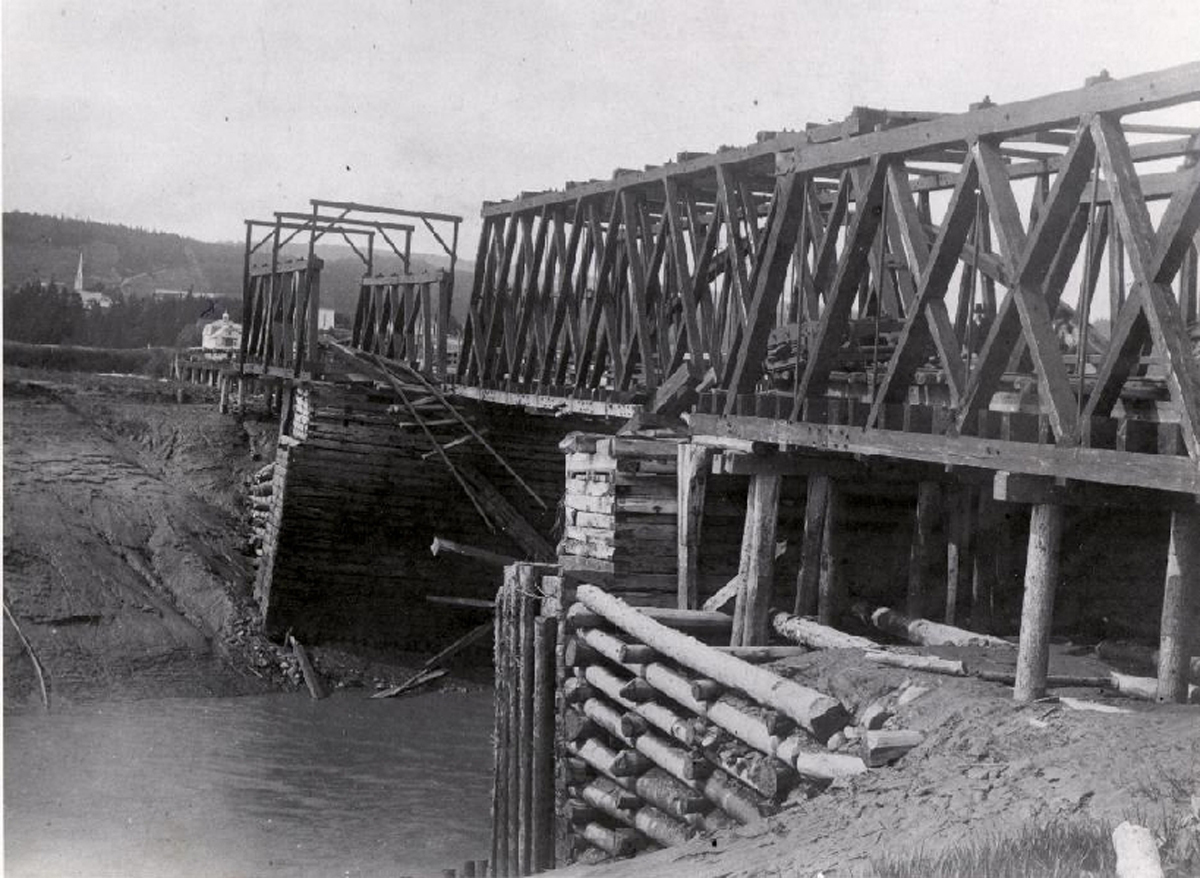
Miraculously, there were no fatalities. The tide was at a low point, so the river was only a few feet deep, which meant that passengers were spared the dreadful fate of drowning. Additionally, the train was running almost empty when it fell, with only seven passengers aboard, along with the crew. One was knocked unconscious and all were shaken, but there were few major injuries. The timing of the collapse was lucky: just a few days later, a Dominion Day excursion was planned, and the train would have crossed that same bridge loaded up with 400 people.
The mail car also fell into the river when the collapse took place, plunging letters and packages into the shallow water of the Shepody. Once the passengers and crew were taken to safety, the train's conductor, Archibald Downing, waded into the river and made his way into this waterlogged mail car to rescue a specific piece of mail: a package containing $1,000.
After the bridge collapse, the line to Harvey closed. The rail bridge over the Shepody was never rebuilt.
2. The Old Bank
ca. 1930s
This postcard shows the Riverside-Albert Old Bank during its early years in the town of Riverside. The building has a complex history, as it was moved twice after this postcard was made, once into the town of Albert and once to its current location.
* * *
The three-storey structure you currently stand outside was built to be a bank and was furnished with the wealth and status of a bank in mind. The upper storey contained the home of the bank manager and his family, which served the dual purpose of elevating the manager's social status and providing additional security to the bank. The richly furnished chambers of the manager were designed to show visitors his wealth and prestige.
The bank remained in Riverside until 1928, when the falling prosperity of the lumber industry, and the wharves it utilized, led to the business being moved to the nearby town of Albert. It was placed on skids and dragged nearly two kilometres west up Water Street by a team that consisted of one horse and a few men. Originally, the building operated as a Bank of New Brunswick, but it later became a branch of the Bank of Nova Scotia.
3. New Brunswick's Largest Bank Robbery
1945-46
This photo shows the Old Bank in its second location, on Water Street in the town of Albert, in 1945. The three-storey building served the Bank of Nova Scotia at the time, as seen in the sign above the door in this photo. The bank operated for nearly a century but finally closed after a disastrous event: New Brunswick's largest ever bank robbery.
* * *
A short chase and investigation followed the incident, and the two suspects were caught and convicted. The money, however, was never recovered, and remains missing to this day. The year after the robbery, the bank closed its doors, and the building faced demolition. It was saved, however, and once again moved, this time to its current location. Today, the building operates as a small museum and a visitor centre. It displays the history of banking in Albert County and is a popular tourist attraction in Riverside-Albert.
4. Businesses of Riverside-Albert
va. 1900-1905
This picture of King Street in the town of Albert shows the landscape of businesses, churches, and homes that stood here in the first years of the twentieth century, before multiple fires swept through the town and reduced this street to ashes and debris. At the end of the street in the photo stands the Waverley Hotel, while restaurants and shops line the road closer to the photographer. A lady in a long black skirt and white blouse stands to the left halfway down the road.
* * *
The first major fire, known as the "Big Conflagration", took place in 1905 and destroyed the entire business section of Albert. Years later, in 1921, another fire struck, burning down the Waverley Hotel, shown in this photograph at the end of the street. Then, in 1933, another fire struck, threatening the entire village and leading to several injuries.
"Late tonight a band of weary but courageous firemen stood guard over the smouldering ruins of seven residences, two stores, ten barns, a warehouse and a woodworking shop which were razed this afternoon in the most disastrous fire this picturesque village has experienced since 1905. No explanation could be given tonight as to the probable cause of the fire."1
The losses of this 1933 fire were estimated at around $61,000, or $1.2 million in today's dollars, with inflation calculated. The flames first started in a barn and had a considerable head start on the village—almost everyone from town was, at the time, gathered on the wharf at Riverside to view the arrival of a Norwegian steamship that had come to take a load of pulpwood. By the time the blaze had been spotted and the volunteer firefighters responded to the call, the flames had already grown considerably. The Moncton Fire Department was called in and the fire was eventually brought under control by the late evening of that day.
The 1933 blaze also resulted in five major injuries, though there were luckily no fatalities. One man's leg was fractured when a timber collapsed on it as he attempted to assist the firefighters. Another four men were injured in a car crash as they rushed to help put the fire out. Many of the volunteer firemen also received burns on their hands, arms, and faces, as few had the proper firefighting gear.
The cause of the 1933 fire was never discovered. Rumours in the village of Albert blamed children playing in the barn where the fire first started.
5. The Albert County Exhibition
1981
This photo from 1981 shows the Oulton Hall in Riverside-Albert being moved to a new location within the Albert County Exhibition Fairgrounds, where you currently stand. The hall is a key part of this annual event and has been host to parts of the agricultural celebration ever since the fair's first inception.
* * *
In 1913, nearly 110 years ago, these small fairs were replaced by a larger, longer celebration: the Albert County Exhibition, taking place in the town of Albert. Organized by the Albert Agriculture Society, the fair, which would become an annual tradition in the community, was a full three days long. Early events included displays and competitions of produce, livestock, homecooking, art, and sewing.
"The three days' exhibition of the newly organized Albert Agricultural Society opened Thursday, October 9, at Albert under favorable auspices. The weather was ideal and a fair sized crowd was present. The horses, with the exception of the roadsters, were shown Thursday and the exhibit was an exceedingly fine one and received great praise from the judge… The agricultural and dairy products, fruit, and handiwork were on display in Oulton Hall and during the day visitors enjoyed the music furnished by the orchestra… Among the features on Saturday of the Albert Fair in which most interest was taken were the exhibition of ladies' and gentlemen's driving rigs. These paraded at the Station square and made an attraction that held the attention of a large gathering. A good deal of interest was taken in the hauling competition in which the team owned by Alden Smith of Hopewell Hill took first prize."1
Today, the Albert County Exhibition is still going strong, despite having to cancel during the Covid-19 pandemic. In addition to the traditional agricultural competitions and displays, the fair includes a Queen pageant, a parade, midway rides, food, and entertainment. A new roofed arena and a new exhibition hall were also recently added to the fairgrounds.
6. Religious History
New Brunswick Museum Collection 1987-17-519
The St. Alban's Anglican Church in Riverside-Albert, pictured here, is nearly 115 years old. It was built in 1907 to replace two other churches, one in Hopewell Hill and the other in Harvey. The scattered Anglican parish in Albert County could not support two separate churches, and after the Church of St. John in Hopewell Hill burned down, the town of Albert was selected as a midway point for a new building.
The church building is styled after English churches in a modified Gothic tradition, with low walls built of cobble and field stones laid in cement. A small tower and steeple is located in the right corner of the building, and all of the windows are done in stained glass, including a memorial window depicting the Good Shepherd. The church was officially dedicated on September 3rd, 1907, by Bishop Richardson of Fredericton.
* * *
These two churches are both historic places of worship that have served their communities for a century. The Baptist Church in Riverside-Albert, however, is housed in a building that is scarcely five years old, after a disastrous fire in 2013 destroyed the historic Baptist church from 1871. A fire started in the building at six in the morning, and it took 30 firefighters three hours to extinguish the blaze, by which point the building had been lost. The congregation rebuilt, and the new church was dedicated in 2015.
7. Education on Riverside-Albert
1945 - 1946
This historic photo shows the Riverside Consolidated School, which is today the oldest operating consolidated school in Canada. This building was originally thought of as one of the finest schools in the country, but it did not always exist, and what came before it was a unique and challenging system of one-room schoolhouses, long walks, and frosty mornings for the children of Albert County.
* * *
These schools were often crudely furnished and kept clean and orderly by the pupils and teachers themselves. There was no janitor to light the fire before class, so the mornings were often chilly. One-room schoolhouses lacked libraries, lab spaces, and other modern staples that we now expect our schools to have.
Additionally, these schools, located as they were in a single large room, provided major challenges for teachers, who were expected to teach and look after every single grade and age of pupil. High school students often went to live in the larger cities to attend school, boarding with relatives and friends if their families could not afford the steep fees of private education. But for the teacher of a one-room schoolhouse, the challenges were still great. With grades from Kindergarten up to Grades 8 and 9, there was a vast amount of curriculum to be taught. Often, one age group would sit with workbooks while the teacher lectured to another.
Still, there were benefits to this system and many who found great value in it. Young children remained close to home, independent of bussing systems and kept within their close-knit communities. Teachers and pupils alike were familiar to parents, who could know their child was in a safe space.
Yet eventually, this system came to an end. A new era of education began in Albert County.
8. The Riverside Consolidated School
1905
This photo shows a crowd of construction workers standing outside of the Riverside Consolidated School during the building's construction in 1905. The large building, with its several storeys and amenities such as modern ventilation, plumbing, and heating, was a huge change after the one-room schoolhouses that originally made up Albert County's education system..
* * *
In Albert County, a consolidated school was viewed as a solution to a lot of problems. Kids would no longer face cold, remote classroom buildings and long walks, as a bus system would instead be put in place. Snow would not cancel classes as often, and students would have access to a library and a lab. Additionally, students could be sorted into grade levels and would therefore receive a greater level of attention from teachers who were not required to look after five or six grades at once.
Construction of the Riverside Consolidated School began in 1904 after lengthy debates on whether or not to build the school and where to put it. Some wanted the school to be in Albert; some fought for it to be in the town of Riverside. As a result, it was located halfway between the two.
The school was designed by a local Albert County architect, W.E. Reid, and partially funded by Abner Reid McClelan, a Riverside resident who had previously served as the Lieutenant-Governor of New Brunswick. He donated $5,000 towards the total cost of $20,000, first obtaining the promise that along with the usual subjects, students would be taught manual training, household science, and nature work. The school, which included eight classrooms and was staffed by seven teachers and a janitor, first opened in the fall of 1905 with 240 students enrolled. In the warm months, these students were brought to school by a horse-drawn van, while in the winter, a horse-drawn sleigh served as a bus.
Today, the school is still in operation, though its student population has dwindled throughout the years and now sits at around 89. In the last decade, it has struggled to keep its doors open, with potential closure brought to the table in 2015. The school was saved, however, preventing students from Albert County from having to bus even farther from home to attend classes.
Endnotes
4. Businesses of Riverside-Albert
1. "Village of Albert Hard Hit By Fire." The Moncton Daily Times, Vol. 56, No. 297, July 28th, 1933. https://albertcounty.tripod.com/id48.html.
5. The Albert County Exhibition
1. "Very Successful Fair at Albert." Albert Journal, Oct 15th, 1913.
Bibliography
McLean, Dawne. "Albert County Exhibition: 105th Anniversary Tribute." Connecting Albert County, Sept. 2018. http://www.connectingalbertcounty.org/culture--heritage/albert-county-exhibition-105th-anniversary-tribute.
"Old Bank of New Brunswick Museum." MyNewBrunsiwck.ca, August, 2015. https://mynewbrunswick.ca/old-bank-of-new-brunswick-museum/.
"Riverside Consolidated School." Albert County Museum & RB Bennett Centre. https://www.albertcountymuseum.com/riverside-consolidated-school.
"Salisbury to Albert Railway." Albert County Museum & RB Bennett Centre. https://www.albertcountymuseum.com/salisbury-to-albert-railway.
"Very Successful Fair at Albert." Albert Journal, Oct 15th, 1913.
"Village of Albert Hard Hit By Fire." The Moncton Daily Times, Vol. 56, No. 297, July 28th, 1933. https://albertcounty.tripod.com/id48.html.




